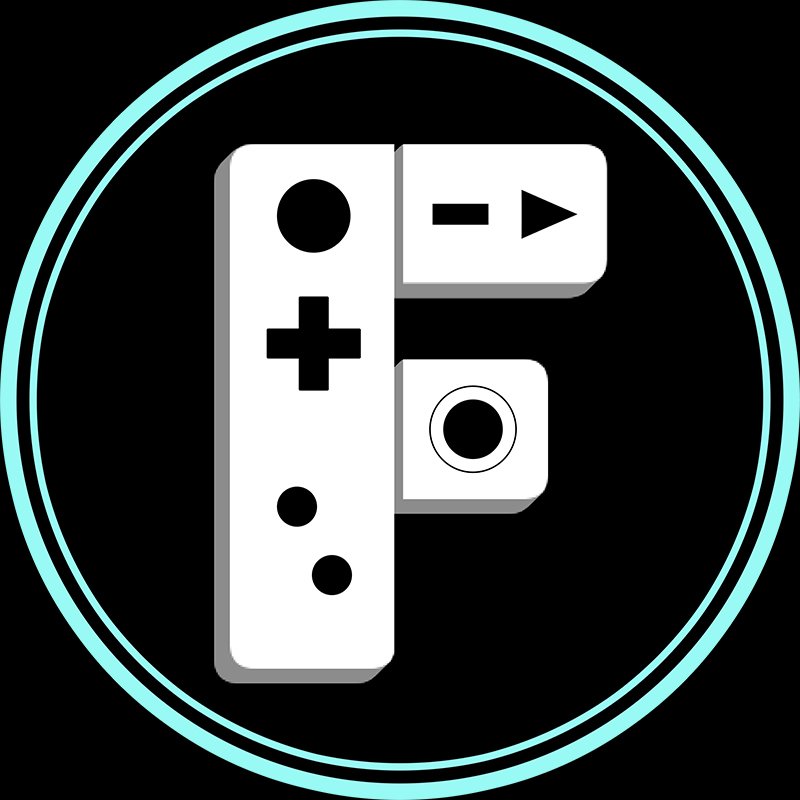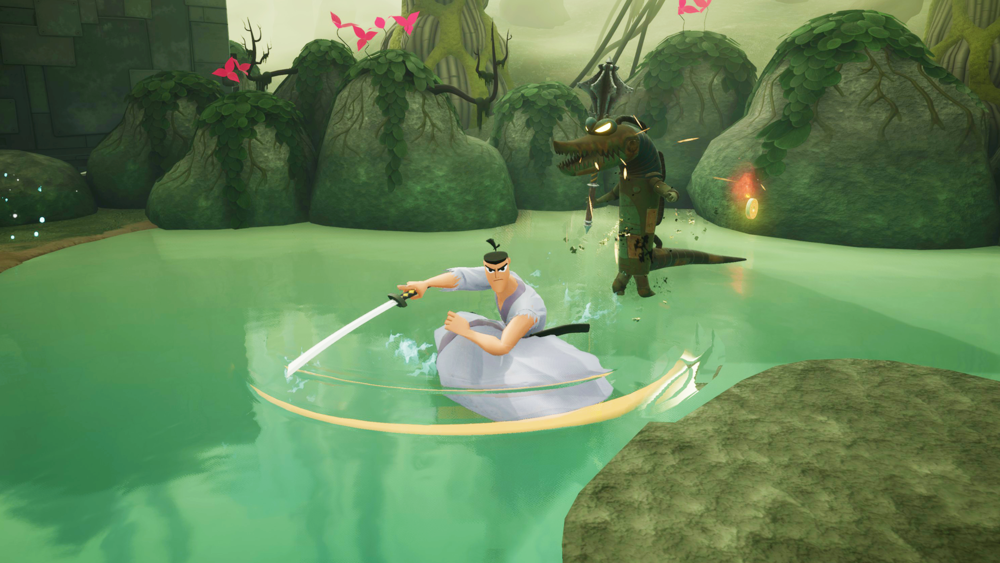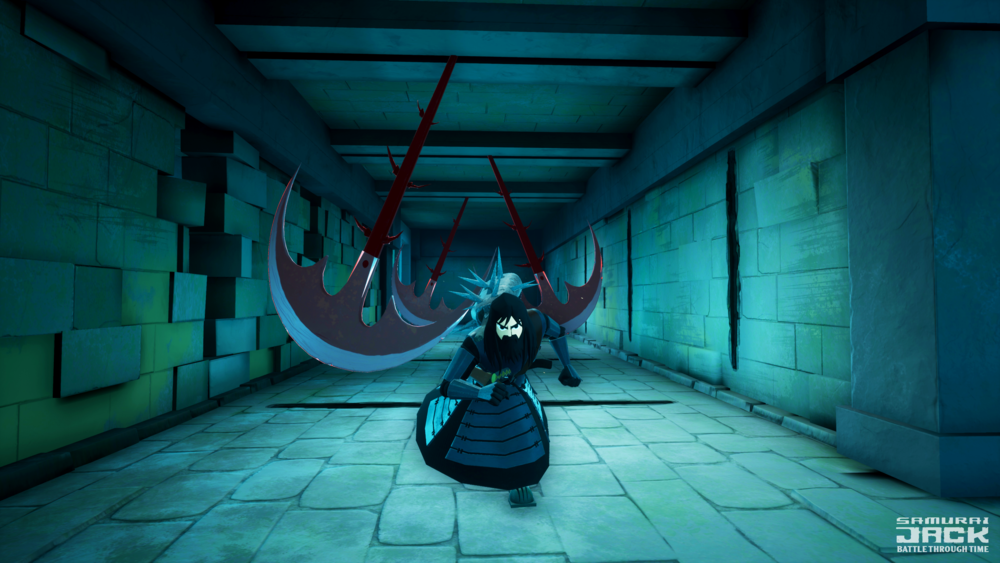Samurai Jack: Battle Through Time (Switch) Review
I have a long history with the show Samurai Jack. Not growing up with cable or satellite TV until I was 14, my opportunities to watch popular cartoons on Nickelodeon, Disney, or Cartoon Network were sparse. When I did have the chance I was excited, of course Dragon Ball Z, Fairly Odd Parents, Dexter’s Lab, Ren & Stimpy, were all on the list of shows I enjoyed but Samurai Jack was where it was at. It stood out from the rest. It’s more serious tone, overarching plot, and distinctive framing and action choices all helped cement Samurai Jack in my childhood brain. It wasn’t until adulthood that I watched every episode in earnest, following a few episodes being used in one of my animation classes as excellent examples of framing, composition, and storytelling through environment and action versus dialogue. I later picked up the box collection of the entire series on Blu-ray.
The show is a masterclass of those elements. Samurai Jack is full of incredibly creative fight sequences in terms of not only visuals but also in how Jack approaches the fight after initial efforts fail him, not to mention the slew of fun characters and locations. I was pretty excited at the prospect of a brand new Samurai Jack game. It is pretty unexpected as the series is well outside of its peak popularity, even a few years past its fifth and final season in 2017. Samurai Jack: Battle Through Time has a lot to live up to with the various elements it needs to incorporate from the show. I’m expecting satisfying action with creative and thoughtful boss fights, lots of locations and characters to revisit, and a story that utilizes a show-don’t-tell approach.
I’m always curious how a distinctly 2D visual style will translate into polygons. Samurai Jack: Battle Through Time makes the transition mostly pretty well but some of the smoothness is lost in the transformation. I think other games have nailed the 2D in 3D look better, but this does not look bad. The character silhouettes are intact and the environments do an excellent job of capturing the feel of the series. I love that as Jack takes damage his appearance changes. His clothes shred and tear, his hair comes loose just like it does during fights in the show. Character animations are a bit stiff but well enough to sell it. The impact effect animations and explosions are super satisfying. For some cutscenes, the multi-framing is used giving that exciting living comic book feel. Each of the visual elements that helped make Samurai Jack stand out is present, but each of these could have been improved; each use feels less intentional. I was a bit disappointed that the multi-framing was never once used in the actual combat and only in cutscenes. In the end, while this is a video game featuring Jack, I never once felt like I was Jack.
This unfortunately is emphasized further in the gameplay, taking cues from Dark Souls and perhaps more so from the more recent Star Wars Jedi: Fallen Order game with weak and strong attacks, a dodge, and a block with a parry system. There is also an array of weapons available, along with Jack's magical katana there are hammers, spears, fists, and clubs. Every enemy is weak to at least one of the available weapons. Each weapon has different timings and combos that can be upgraded via a skill tree. There is also a good variety of ranged weapons including thrown, bows, and guns. This really fits into the fact Jack never was shy from utilizing the best tool for the job. Unfortunately, you only have quick access to four of these options at any given time, requiring you to go into the menu to equip a different weapon to your quick access, and this is further restricted by the availability of consumable items for healing and buffs that can be added to the exact same quick menu. This results in a less than seamless experience. Finally, each melee weapon has access to incredibly powerful special attacks that are admittedly fun to activate and are effective in both crowds of easy enemies and against powerful single boss fights. These special attacks were where I was expecting some epic use of the multi-framing and extra special animations to really sell that classic Samurai Jack action. My initial disappointment was overcome fairly quickly as I continued. The game’s combat became more fast-paced and satisfying, putting it more on par with what I expected from a Samurai Jack game. That said, there are situations the game pits you against that fails to provide the tools to handle it. Fights in particular that have numerous ranged based enemies can chew through health pretty quickly.
Samurai Jack: Battle Through Time is level-based with each ending in a boss fight. The first couple of levels are exceptionally easy; luckily that doesn’t last long and the game really starts to offer some serious challenge soon after. Enemies require more hits, hit harder, and can block. Changing weapons, upgrading combos, and putting out more damage becomes increasingly required further into the game. The challenge is welcome and is pretty unexpected in a tie-in game for a cartoon.
I reached the final level fairly quickly and ended up having to back out and replay some of the levels in order to get the resources required to upgrade more tools before attempting it again. This is where Samurai Jack: Battle Through Time takes some inspiration from Devil May Cry or Bayonetta as each level has a rating system attached, giving players better rewards the faster and better they do. This definitely adds some replay value and gives an easy second chance to go back and find things that may have been missed the first time through.
While the levels are fairly linear, exploration is often rewarded. Overall progression via upgrades to weapon training and various skills feels good throughout the game, though I do wish many things were gained through story moments instead of simply bought via a store or upgrade menu. The biggest example of this is gaining access to a double jump. However, considering that in the original show there is an entire episode where Jack is literally taught to “jump good”, reliving this moment would have been great in the story or game to tie the progression to the story itself. Instead, it is obtained by earning enough points and is just selected within the game's menus. It feels like a missed opportunity and the same could be said for many of the weapons obtained as well.
Samurai Jack was very good at creating memorable showdowns against memorable foes. Typically requiring Jack to implement a specific tactic or tool to get the job done. While each boss does have their own patterns and requires different dodge or parry options, none of them felt particularly unique. Only once was it ever hinted that a specific weapon would be particularly effective against a boss and even then it didn’t really seem to impact things much. The most creative any of the fights got was when minions were being summoned and, when defeated, would drop orbs that could be attacked and sent flying towards the boss. I was disappointed that none of the boss fights really felt all that memorable or particularly challenging, resulting in me just wailing on the boss for a few minutes with some dodge rolls or blocks thrown in. There’s no sign of anything that feels as memorable as the bridge fight, the archer tower, or black and white.
Samurai Jack: Battle Through Time’s story has the player pseudo-playing through the events of the series. Aku, once again, in the final battle flings Jack back in time, setting off the events of the game. There are some great moments within the setup of trying to return to the final battle versus Aku. Ashi, one of the daughters of Aku and who was converted in the series, is desperately trying to reopen the portal back but can only do it in small sections, sending you forward through time and eventually leading to the final battle. It was fun to see the characters from the series in their element, especially the Scotsman. It’s a fun way to frame a story around the idea of playing through levels.
This game is elevated with the return of the original cast. They fall back into their roles flawlessly and it makes the experience just that much more special. The deliveries are excellent, clear, and getting the distinct voices helps tie it to the original series. Music-wise not much really stood out to me; even the theme song feels strangely absent. As for sound effects, I wasn’t blown away but I also wasn’t distracted by anything and there wasn’t a noticeable absence either.
Samurai Jack: Battle Through Time is a decently good time. It offers more challenge than I expected but not so much so that it becomes frustrating. The original cast, the successful visual conversion to 3D, and the suitable story all come together to create one of the best tie-in games I’ve ever played. So while there are definitely areas for improvement when it comes to progression and creative encounters, I still enjoyed myself and for the $40 price tag, I would’ve been reasonably satisfied with my purchase. Throw it on a wishlist and grab it on sale sometime to get a solid deal on what I bet will be the best Samurai Jack game we are likely to get.
SCORES
GAMEPLAY - 7.5/10
VISUALS - 7/10
SOUND - 9/10
CONTROLS - 8/10
REPLAY VALUE - 8/10
OVERALL - 7.9/10
More information about Samurai Jack: Battle Through Time can be found on the official website. A digital Switch copy was provided for the purpose of review.








On a path that will ultimately result in his own destruction, James Savage takes on his vampiric ex-girlfriend Draculae in El Paso Elsewhere, a moody neo-noir action shooter from Strange Scaffold.